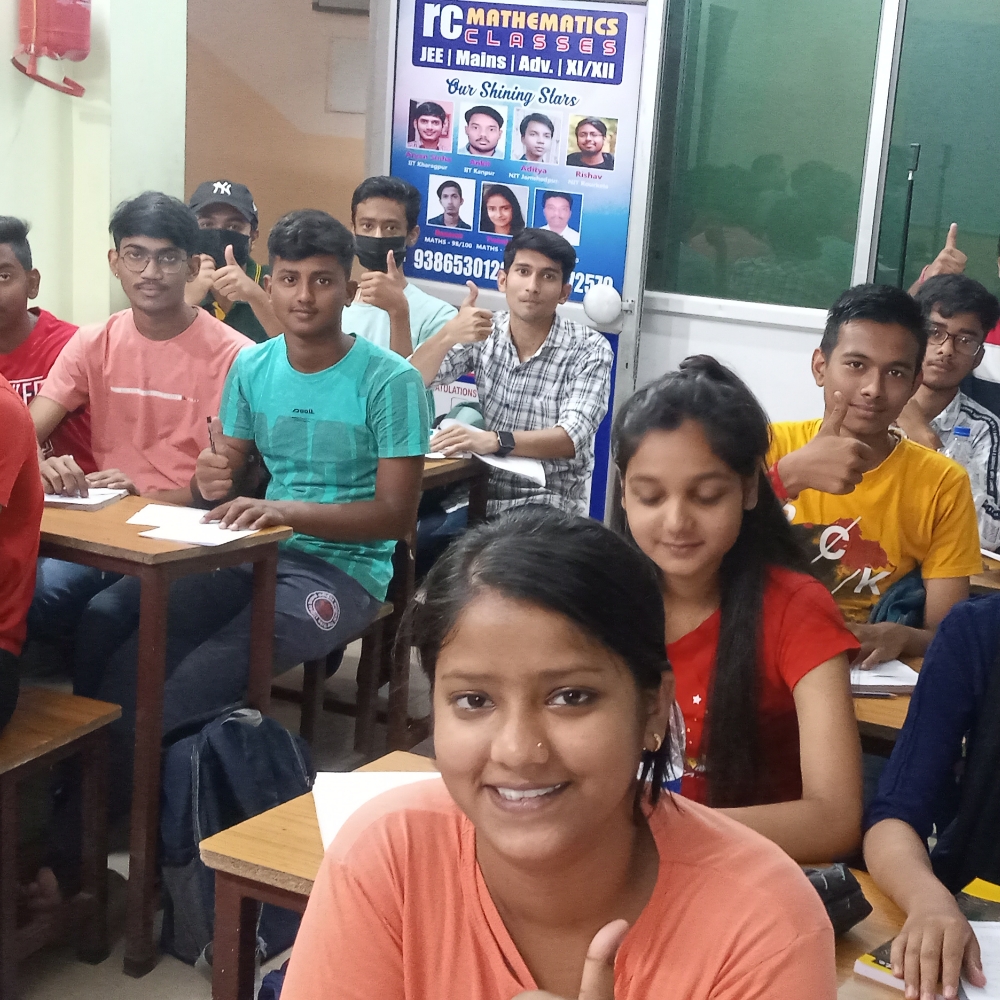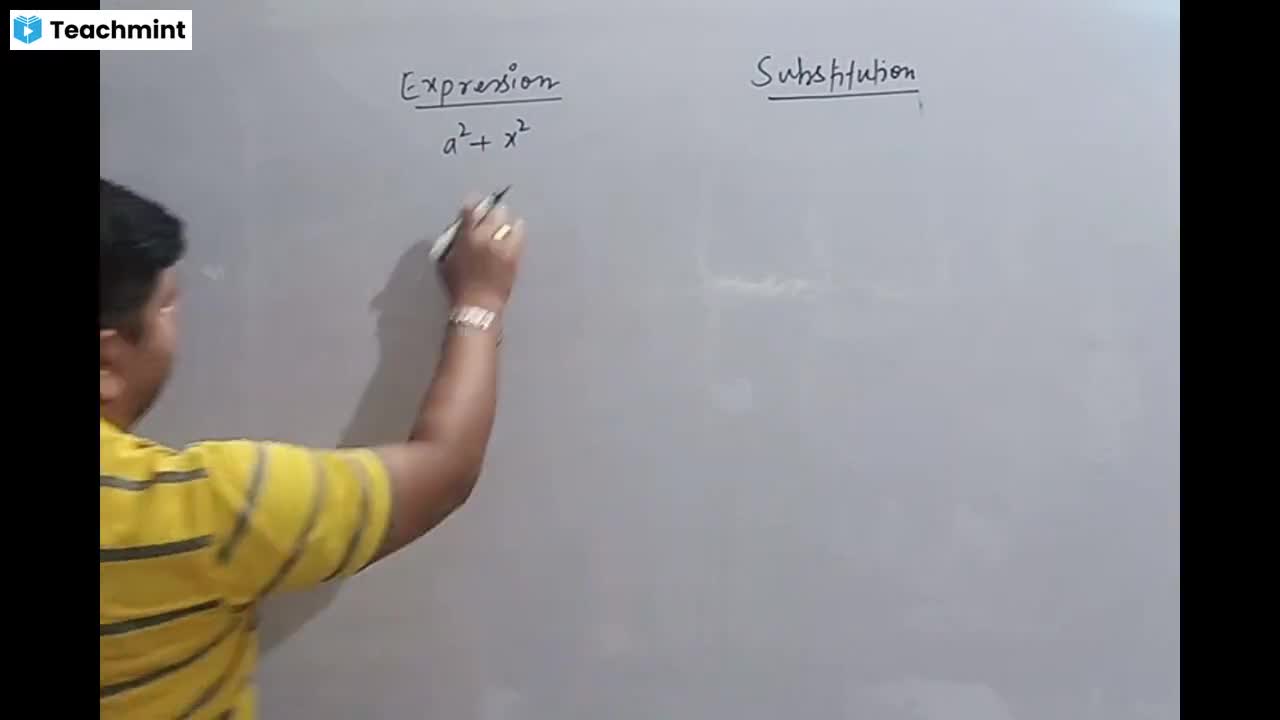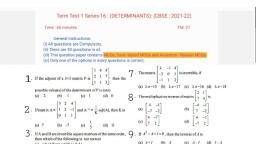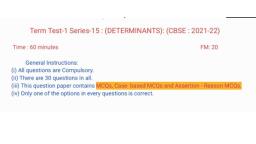Question 1 :
A square matrix A has 9 elements. What is the possible order of A?
Question 2 :
If A=$\displaystyle \begin{vmatrix} 1 \\ 3 \end{vmatrix} $ B=$\displaystyle \begin{vmatrix} -1 \\ 4 \end{vmatrix} $ then 2A+B =
Question 3 :
If$\displaystyle \begin{vmatrix} x & 1 \\ y & 2 \end{vmatrix} $-$\displaystyle \begin{vmatrix} y & 1 \\ 8 & 0 \end{vmatrix} $=$\displaystyle \begin{vmatrix} 2 & 0 \\ -x & 2 \end{vmatrix} $ then the values of x and y respectively are
Question 5 :
${a}^{-1}+{b}^{-1}+{c}^{-1}=0$ such that $\begin{vmatrix} 1+a & 1 & 1 \\ 1 & 1+b & 1 \\ 1 & 1 & 1+c \end{vmatrix}=\triangle$  then the value of $\triangle$  is
Question 6 :
If A is square matrix such that $A (Adj A)=\left( \begin{matrix} 4 & 0 & 0 \\ 0 & 4 & 0 \\ 0 & 0 & 4 \end{matrix} \right) $ then det (Adj A)=
Question 7 :
If $A+B=\begin{bmatrix} 2 & 3 \\ 4 & 5 \end{bmatrix}$ and $A=\begin{bmatrix} 1 & 2 \\ 0 & 3 \end{bmatrix}$, then matrix $B$ is
Question 8 :
If A is a square matrix of order n, then adj (adj A ) is equal to
Question 9 :
A matrix has $18$ elements. Find the number of possible orders of the matrix
Question 10 :
If $A=\begin{bmatrix} \sin ^{ 2 }{ \alpha  }  & \sec ^{ 2 }{ \alpha  }  \\ co\sec ^{ 2 }{ \alpha  }  & 1/2 \end{bmatrix}$ and $B=\begin{bmatrix} \cos ^{ 2 }{ \alpha  }  & -\tan ^{ 2 }{ \alpha  }  \\ -\cot ^{ 2 }{ \alpha  }  & 1/2 \end{bmatrix}$, then $A+B$ is equal to
Question 11 :
If $n = p$, then the order of the matrix $7X - 5Z$ is:<br>
Question 12 :
If $A - 2B= \begin{bmatrix}1 & 5\\ 3 &7 \end{bmatrix}$and $2A - 3B =\begin{bmatrix}-2 & 5\\ 0 &7 \end{bmatrix}$,then matrix B is equal to<br>
Question 13 :
If $A=\begin{bmatrix}1 & 0\\ -1 & 7\end{bmatrix}$ and $A^2=8A+KI_2$, then $K$ is equal to
Question 14 :
Assertion: The matrix $\begin{bmatrix} a & 0 & 0 & 0 \\ 0 & b & 0 & 0 \\ 0 & 0 & c & 0 \end{bmatrix}$ is a diagonal matrix
Reason: $A[{a}_{ij}]$ is a square matrix such that ${a}_{ij}=0$ for all $i\ne j$, then $A$ is called diagonal matrix
Question 15 :
If $A$ and $B$ are square matrices such that $B = -A^{-1} BA, \,$ then $\, (A + B)^2$ is equal to 
Question 16 :
For positive numbers $x, y$ and $z$ the numerical value of the determinant $\begin{vmatrix} 1 & \log_x y & \log_x z\\ \log_y x & 1 & \log_y z \\ \log_z x & \log_z y & 1 \end{vmatrix}$ is<br>
Question 17 :
If $A = \begin{bmatrix}1& \log_{b}a\\ \log_{a}b& 1\end{bmatrix}$ then $|A|$ is equal to<br>
Question 18 :
If $A$ is a skew symmetric matrix, then $\left| A \right| $ is
Question 19 :
$A=\begin{bmatrix} 5 & 5a & a \\ 0 & a & 5a \\ 0 & 0 & 5 \end{bmatrix}$ If $\left| A^{ 2 } \right| =25$ then $|a|=$
Question 20 :
$D=\begin{vmatrix} 18 & 40 & 89 \\ 40 & 89 & 198 \\ 89 & 198 & 440 \end{vmatrix}=$
Question 21 :
If the lines $ax + y + 1 = 0, x + by + 1 = 0$ & $x + y + c = 0$ where a, b & c are distinct real numbers different from 1 are concurrent, then the value of $\displaystyle \frac {1}{1-a}+\frac {1}{1-b}+\frac {1}{1-c}=$<br>
Question 22 :
If $ A = \begin{bmatrix} 1 & 2 \\ 2 & 3 \end{bmatrix} $ and $ B = \begin{bmatrix} 1 & 1 \\ 0 & 0 \end{bmatrix}$ then what is determinant of AB ?
Question 23 :
For a positive numbers $x, y$ and $z$ the numerical value of the determinant $\begin{bmatrix}1 & \log_{x} y & \log_{x} z \\ \log_{y} x & 1 & \log_{y} z\\ \log_{z} x & \log_{z} y & 1\end{bmatrix}$ is:
Question 24 :
If A = $\begin{bmatrix}-8 & 5\\ 2 & 4\end{bmatrix}$ satisfies the equation $x^2\, +\, 4x\, -\, p\, =\, 0$, then p =
Question 25 :
Let $\Delta =$ <br> $\begin{vmatrix} sin\theta cos \phi & sin\theta sin\phi & cos\theta \\ cos\theta cos\phi & cos\theta sin\phi & -sin\theta \\ -sin\theta sin\phi & sin\theta cos\phi & 0\end{vmatrix}$, then
Question 26 :
If $A=\begin{bmatrix}\alpha &2 \\2 &\alpha \end{bmatrix}$ and $|A^3|=125$, then $\alpha$ is equal to<br>
Question 27 :
Let $A$ be a non-singular matrix. Then $\left| adjA \right| $ is equal to
Question 28 :
If bc +qr = ca + rp = ab + pq = -1 then the value of$\displaystyle \begin{vmatrix}ap& a & p\\bq & b & q\\cr & c & r\end{vmatrix}$ is
Question 29 :
If the polynomial $f(x)=\begin{vmatrix} { \left( 1+x \right) }^{ a } & { \left( 2+x \right) }^{ b } & 1 \\ 1 & { \left( 1+x \right) }^{ a } & { \left( 2+x \right) }^{ b } \\ { \left( 2+x \right) }^{ b } & 1 & { \left( 1+x \right) }^{ a } \end{vmatrix}$, then the constant term of $f(x)$ is
Question 30 :
One of the roots of $\begin{vmatrix}x + a & b & c\\ a & x + b & c\\ a & b & x + c\end{vmatrix} = 0$ is































































